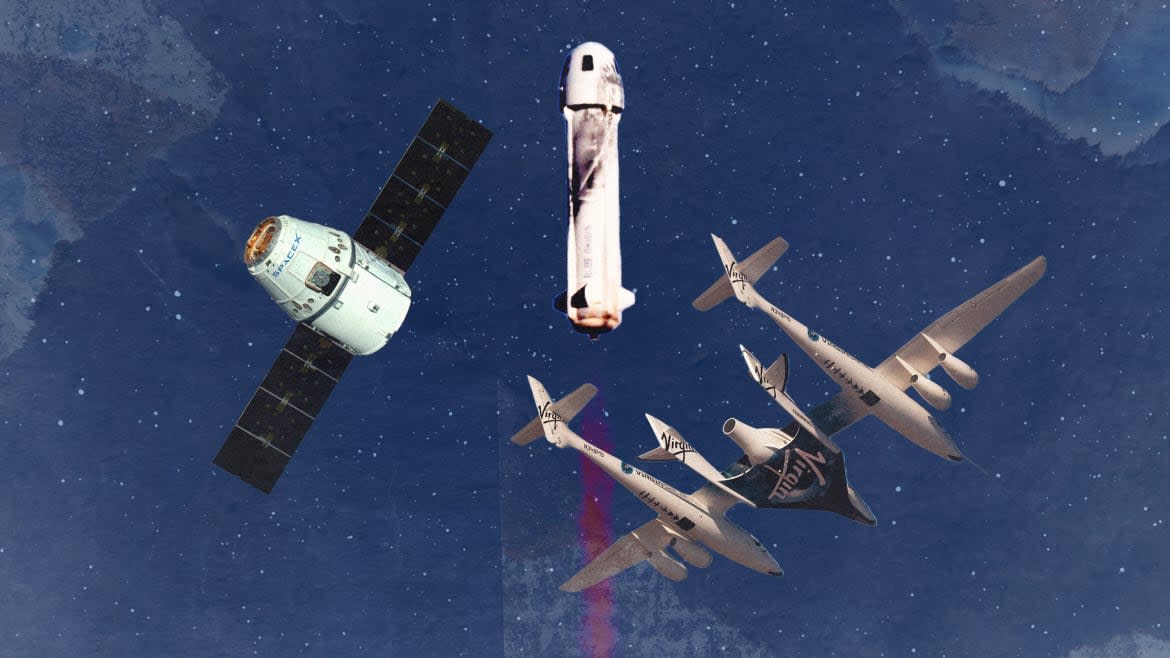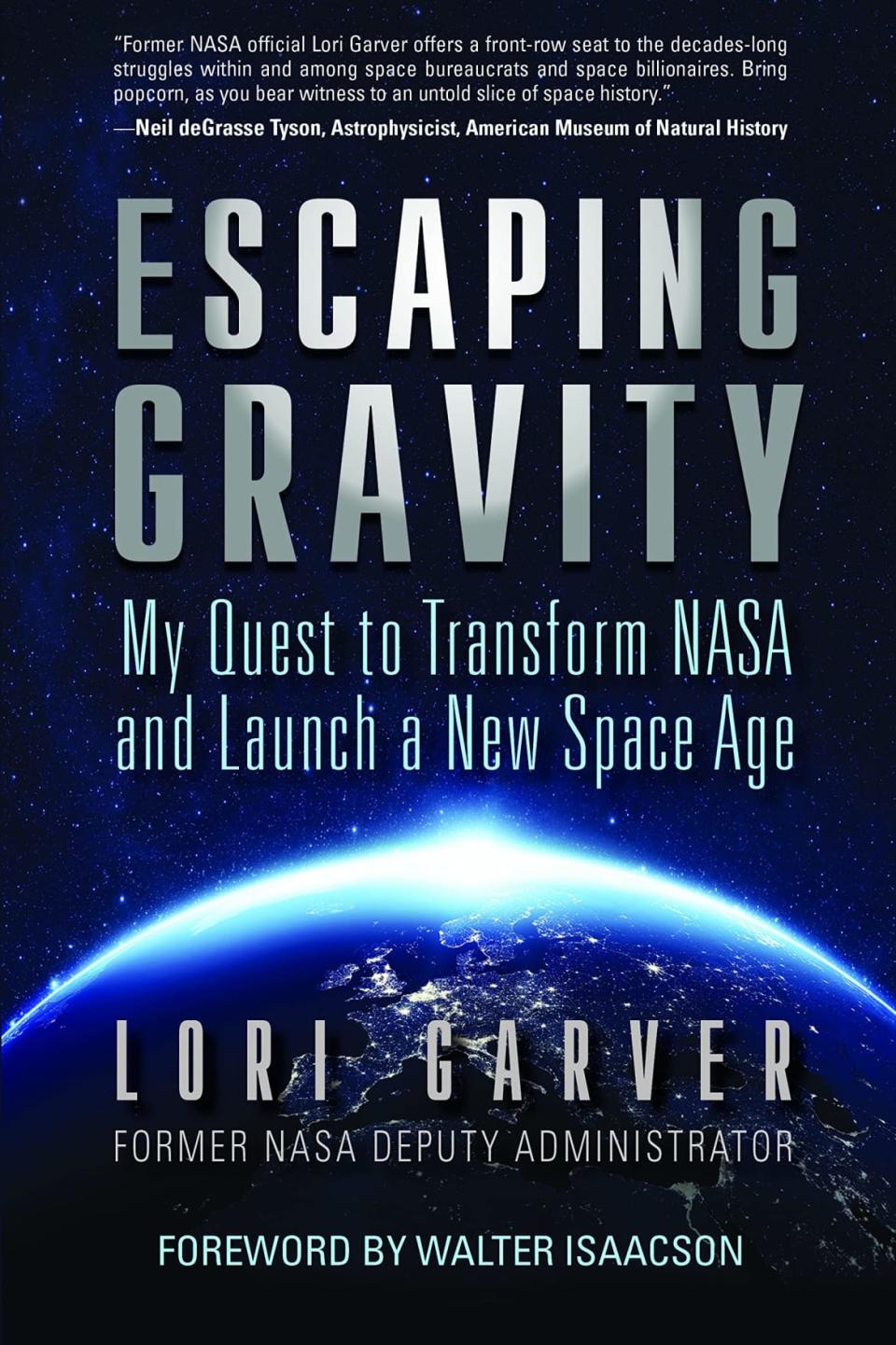How the Billionaire Space Race Blasted Off Because of NASA

- Oops!Something went wrong.Please try again later.
- Oops!Something went wrong.Please try again later.
SpaceX, Virgin Galactic, and Blue Origin are the most visible private companies advancing more accessible human spaceflight today. Each was backed by significant funding from their founders before earning government or commercial contracts. Elon Musk, Sir Richard Branson, and Jeff Bezos have risked their reputations and funneled a portion of their own fortunes into these companies in order to realize their dreams in human spaceflight. They are not the first to do so.
The potential for communications satellites to deliver value beyond NASA and the government was recognized early, which led to their privatization through COMSAT and INTELSAT in the 1960s. These initially quasi-government organizations contributed to the evolution of a burgeoning, profitable telecommunications market that transformed society through instantaneous communications. Private entities incentivized by national governments and international organizations helped create the infrastructure that first allowed us to transmit signals, then voices, pictures, and video, and eventually the internet to anyone else on the planet, anywhere, in real time.
The promise of new satellite constellations in the 1980s and ’90s that fueled traditional aerospace industry interest in NASA’s Reusable Launch Vehicle program also inspired the formation of smaller private rocket companies focused on capturing this expanding market. Many of these ventures had long-term visions of carrying people to space. Some early companies bore more fruit than others, but all helped to lay the foundation for the successes that followed.
How Elon Musk Walloped Jeff Bezos in the Billionaire Space Race
A perceived market for space tourism has been talked about and pursued for decades. Five years before Apollo 11 touched down on the Moon, Pan Am Airlines began its “First Moon Flights Club,” which garnered nearly 100,000 applicants before shutting down its waiting list in 1971. In 1985, an exotic travel company called Society Expeditions announced it would begin flying people to space for $52,200. The firm took in public deposits of $5,000 per seat, but the spacecraft was never completed, and Society Expeditions eventually returned the money.
The concept of human spaceflight wasn’t confined to tourism. Economists, conservationists, and futurists began considering the value of moving mining and heavy industry, such as energy production, off Earth in the 1970s. Studies examined how free-floating structures could support large populations and activities that would benefit from micro-gravity and assure the survival of humanity on Earth and beyond. This early space ideology advanced transformational thinking related to self-sustaining space habitats. Gerard O’Neill’s ideas not only inspired the founding of the L5 Society in the ’70s but also attracted a cult-like following that grew to include Timothy Leary, known for researching the effects of recreational LSD, and Princeton student Jeff Bezos.
One of Timothy Leary’s friends, George Koopman, started American Rocket Company (AMROC) in 1985. Like others in the field, the company was founded to reduce the cost of space transportation and capture the satellite launch market. Koopman was a celebrity space pirate by the time I met him in the mid-1980s, and his Timothy Leary and Hollywood connections added glamor to the early space movement. George tragically died in a car crash at the age of 44, just four months before AMROC’s first launch attempt. The company eventually filed for bankruptcy.

AMROC’s leaders and intellectual property moved on to other similarly motivated efforts that have contributed to some of today’s leading commercial space companies. The lineage of serial rocket designers and entrepreneurs is, indeed, close-knit and complex. A handful of space pirates developed a dozen early companies focused on achieving reusable, cheap access to space; companies like Rotary Rocket Company, XCOR Aerospace, Kistler Aerospace, SpaceDev and Space Services Inc. Each of these ventures in turn grew more designers and investors.
It has been a privilege to have known and worked with many of the individuals who invested their own money to advance sustainable space transportation in the 1980s and ’90s. Most didn’t go into the business just to make money, and some lost their shirts in the process. The not very funny joke at the time was, “How do you become a millionaire in the space business? Start as a billionaire.”
The perceived growth of a massive satellite market that drove much of the early private investment in launch vehicles in the 1990s, evaporated due to a number of unforeseen events, most notably the burst of the dot com bubble. Still, the early projects laid a foundation for later successes in areas such as commercial policy planning, new technologies, advances in satellite development, experience gained by individuals who remained in the industry, and even facilities built to support the activities. The unexpected ingredient was the entrance of billionaires who, thankfully, hadn’t taken the joke seriously.
Excerpted from Escaping Gravity: My Quest to Transform NASA and Launch a New Space Age by Lori Garver, available now wherever books are sold. Copyright © 2022 Lori Garver. Printed with permission of the publisher, Diversion Books. All rights reserved.
Get the Daily Beast's biggest scoops and scandals delivered right to your inbox. Sign up now.
Stay informed and gain unlimited access to the Daily Beast's unmatched reporting. Subscribe now.

